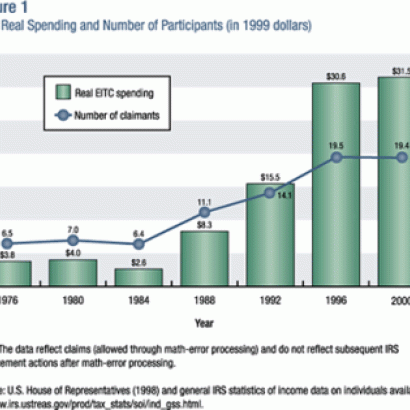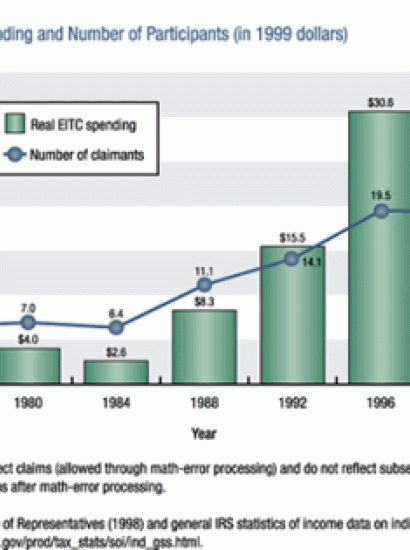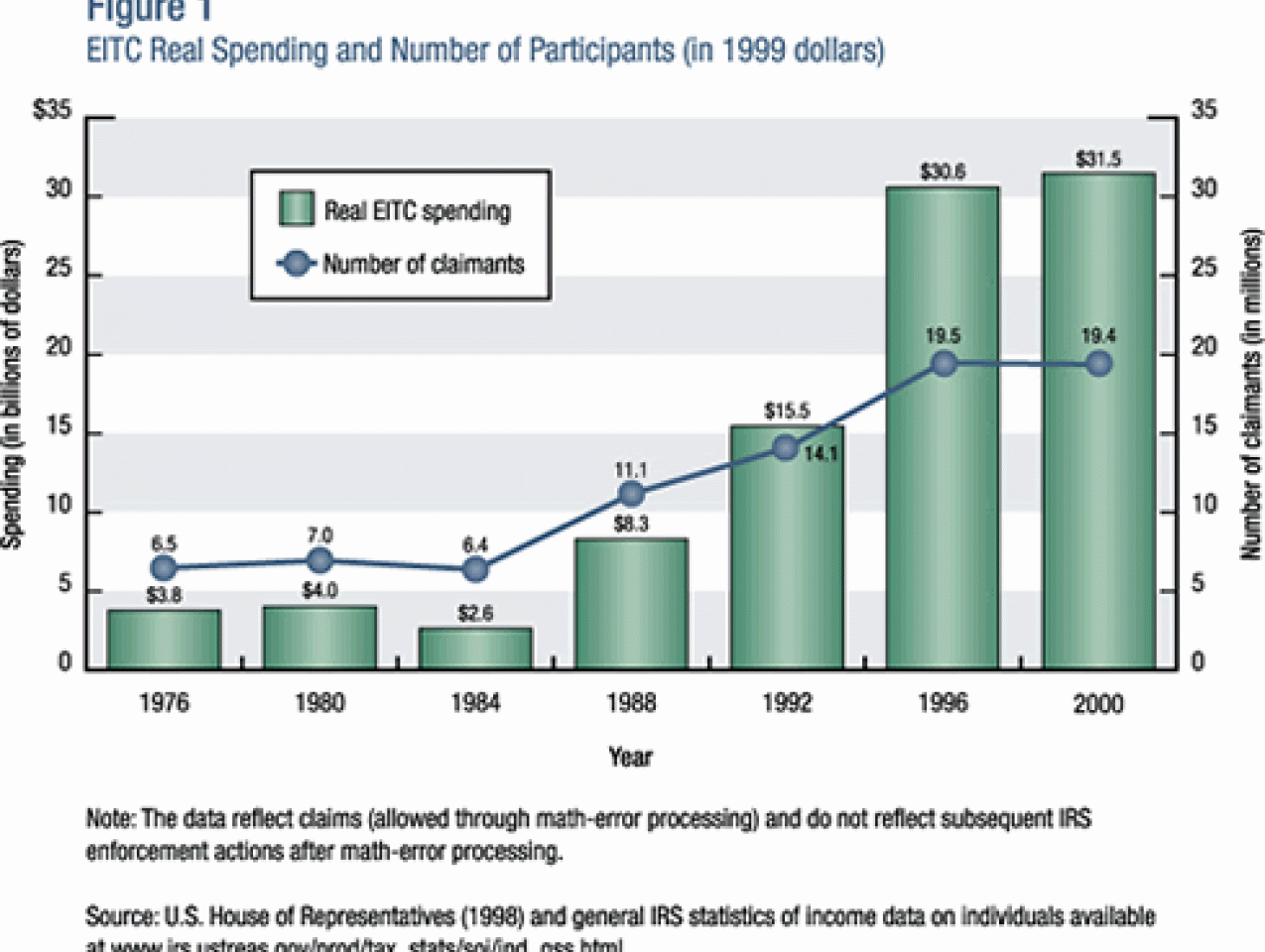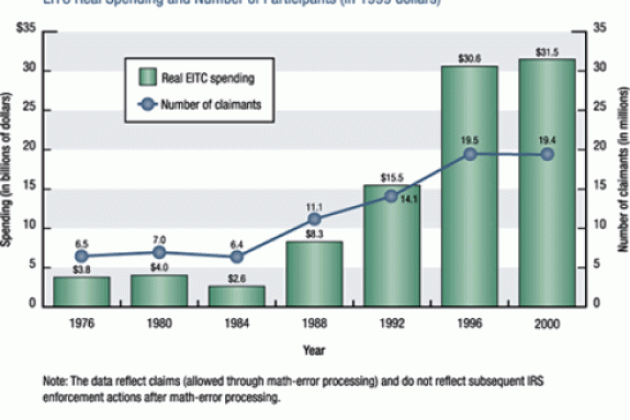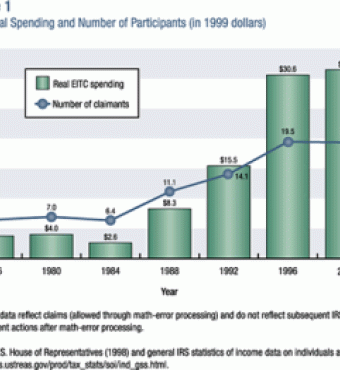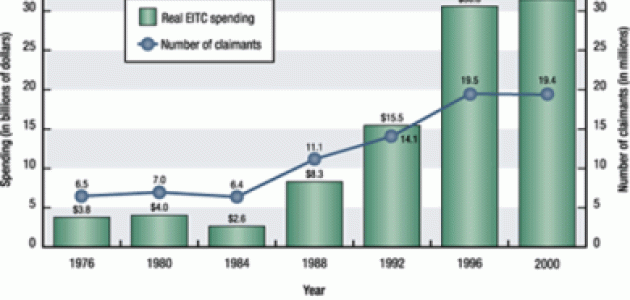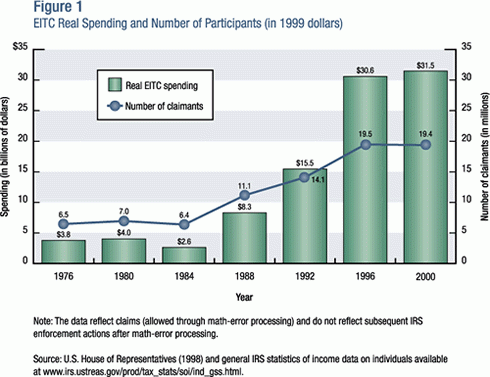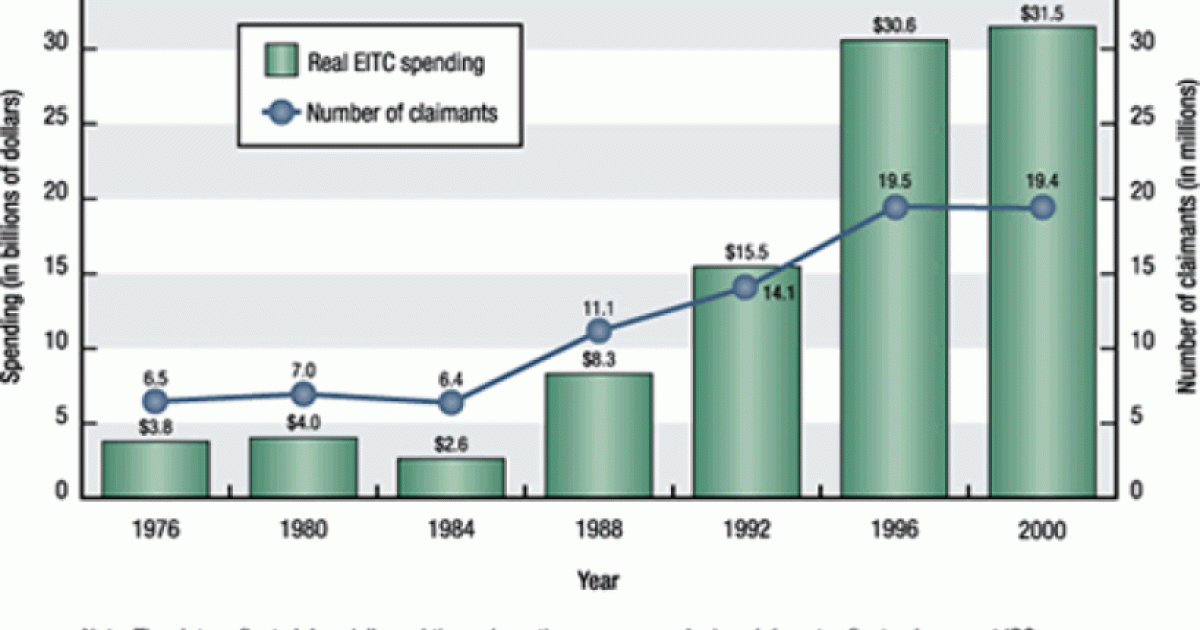- Budget & Spending
- Economics
Another tax season has come and gone. Although for many of us this is a painful and costly ordeal, for more than 16 million impoverished Americans it feels more like Christmas in April. The cause for celebration is a unique anti-poverty program called the Earned Income Tax Credit (EITC). Each year, millions of low-income taxpayers (primarily families with children) qualify for and receive thousands of dollars from the federal government to supplement their earnings. But over the past few years, concerns about inaccurate and misleading applications have cast a cloud of suspicion on the program.
What Is the EITC?
If you have never heard of the earned income tax credit, you are not alone. The EITC gets very little press compared to other social welfare programs, primarily as a result of the broad bipartisan support it receives.
Enacted by Congress in 1975, the EITC is a refundable tax credit administered by the Internal Revenue Service, an agency not generally known for caring about our welfare. As tax credits go, the EITC is unique because it has the potential to “reimburse” individuals who owe no federal income taxes—literally putting cash in their pockets and raising their income for the year. Although it sounds like a late-night “money-making” infomercial, the EITC is an honest and legal federal anti-poverty program that paid out nearly $28 billion to more than 16 million claimants in 2002.
The EITC is not a safety net program. Its benefits are only available to persons who have worked and received earnings during a given tax year. The stated goals of the program at its inception were to (1) offset the impact of Social Security taxes on low-income individuals and (2) encourage these same individuals to seek employment, rather than depend on welfare benefits.
Over the last 28 years, the EITC has grown to become the largest federal cash or near-cash assistance program directed at low-income families—with outlays far exceeding Temporary Assistance for Needy Families (TANF) and the food stamps program. The growth in spending has accelerated at a faster rate than any other federal anti-poverty program, and the number of claimants has also risen rapidly (see figure 1).
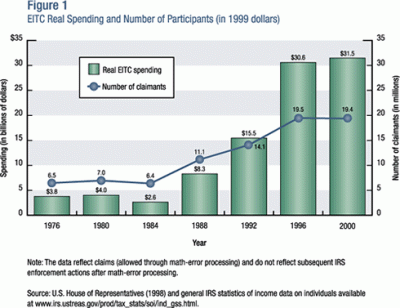
Protecting the long-term viability of this program is important for three reasons. First, the EITC significantly increases the fiscal resources available to working poor families. The program rewards labor earnings with a 40 percent match up to the first $10,000 in earnings (see figure 2). In many cases, EITC benefits are enough to raise a family above the poverty level. Second, the EITC encourages people to choose work over welfare. The program has built-in work incentives, especially at the lowest income levels, which encourage families to attain self-sufficiency. Some studies have shown that the increased availability of the EITC and more generous benefits helped contribute to the decline in welfare recipients after passage of the 1996 welfare reform act (accounting for as much as 20–30 percent of the decline in caseloads).
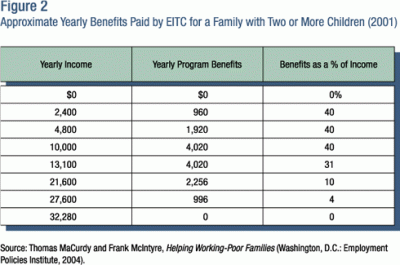
Finally, the EITC is probably the most cost-effective anti-poverty program the federal government operates. According to a report by the National Bureau of Economic Research, the EITC is inexpensive to administer relative to other income-support programs. One of the benefits of a system based largely on self-assessment (such as the EITC) is lower administrative costs. The negative side of such an approach is higher rates of noncompliance, which is the rest of the story.
Certifiable Trouble
There is little argument that the self-reporting of EITC claims has translated into persistently high noncompliance rates—in English, the paperwork is messed up. Sometimes the result is an EITC refund that is less than the individual is entitled to. But more often, the claim results in overpayments to persons who should have received a smaller benefit or nothing at all. The importance placed on addressing EITC noncompliance is a source of intense, often ideological debate.
Each year the IRS processes and pays earned income credit claims that contain inaccurate information. These errors translate into big bucks, somewhere between $8.5 billion and $9.9 billion in overpayments for the 1999 tax year, according to the most recent study on EITC noncompliance. The error rate is around 30 percent, which is significantly higher than other social welfare programs. For instance, the housing assistance program has a 10 percent error rate, the food stamps program, a 7 percent rate, and Supplementary Security Income, 6 percent. As a result, the General Accounting Office (GAO), since 1995, has classified the EITC program as a high-risk area for the IRS.
To address this concern the IRS launched a pilot project for the 2003 tax year. The project pre-certifies a select number of applicants to see if they meet EITC eligibility requirements. In particular, the IRS will screen individuals for falsely stating their income and improperly claiming qualified children. Of the 19 million–plus filers, the agency is performing income verification on 300,000 and requiring another 25,000 to submit forms with their tax returns that prove they are eligible. In addition, the IRS is expanding outreach efforts, simplifying forms, and coordinating the pre-certification of EITC with tax professionals.
When the IRS first proposed the pre-certification pilot program in the summer of 2003, advocate groups, left-leaning think tanks, and some members of Congress vehemently attacked it. They questioned the reliability of the 1999 compliance study, arguing instead that methodological shortcomings, EITC denial appeals, and changes enacted since the original study suggested a lower overpayment rate (exactly how much lower is still unclear). Opponents also questioned the viability of the pre-certification program. The implication is that it would do more harm than good, placing an unfair burden on low-income working families, discouraging eligible needy candidates from applying, and possibly delaying the refunds of honest taxpayers. Chicago mayor Richard M. Daley summed up the opposition’s stance when he said, “There are better ways to stop fraud than through intimidation and confusion.” Finally, opponents of pre-certification questioned the legitimacy of targeting low-income families rather than corporate cheaters and high-income individuals. Besides, they point out, EITC overpayments are only a small percent of the total tax noncompliance losses each year and the IRS could save more money by focusing elsewhere.
Despite these criticisms, the IRS is pressing ahead with its plan to root out EITC abuse. From the agency’s perspective the reasons are fairly straightforward. Back in 1997, Congress ordered the IRS to begin improving EITC compliance and each year since has allocated nearly $150 million specifically for that purpose. Ignoring this mandate is not an option. Whatever the actual rate of noncompliance is, the persistence of erroneous payments means the IRS must do something, in the words of Commissioner Mark W. Everson, to “protect the long-term viability of this critical program, [to] ensure those who qualify receive the credit they are due—but only those who qualify.”
Although the question of harm and undue burden on the poor is an important one, it is not, in fact, being overlooked. The pre-certification pilot program is the only way to put speculation aside and know for sure what impact EITC compliance efforts will have on filers. The 25,000 taxpayers selected for this year’s test run represent less than two-tenths of 1 percent of all EITC claimants—and rather than being randomly selected, they are individuals for whom existing social service databases show no qualifying child. Additionally, the 300,000 tax returns flagged for income verification will be those of persons who have a history of misreporting income in order to increase their EITC benefit. The chance that an eligible working mother claiming her own children will be forced to endure cumbersome red tape and face unnecessary hardships is slim to none.
The best argument against EITC tax compliance efforts is the legitimacy of its focus on low-income working families rather than corporate and high-income tax evaders. Representative Rosa DeLauro stated the case like this: “Those in support of the program seem to believe we should go after low-wage workers while overseas companies go scot-free.” Although the charge has emotional punch, it unfortunately rests on a false dichotomy. This is not an either-or scenario. The IRS can and does actively pursue all types of tax fraud. The agency spent more than $3.5 billion in 2002 on tax law enforcement and has an aggressive strategy for criminal investigation as outlined in its annual business plan. In contrast, Congress last year authorized around $100 million for the EITC pre-certification initiative. Furthermore, requiring proof of eligibility for real cash benefits does not create a double standard based on income; it simply applies a commonsense check used throughout federal and state social service programs.
At some point the argument over EITC noncompliance becomes ideological. For the IRS it’s simple: A false claim is a false claim. But for many advocates of the working poor the issue is infused with concerns over social justice. The poor already suffer enough, so why go after them to scrape together a few misallocated dollars? It’s just plain mean. But consider the lesson such a stance imparts to poor families. Here we have a program specifically designed to encourage Americans to choose work over welfare as the path to a better life. If cheating is ignored or knowingly tolerated, the implications can carry forward into work, schooling, and other areas of life. The reach of EITC is enormous, and its central role in fighting poverty demands a public policy that is consistent and affirming of the principles of hard work and honesty.








